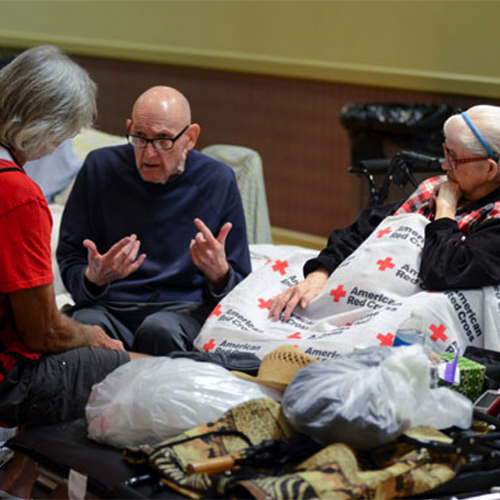Learn how this this special collection communicates the latest research on mass sheltering and disasters and how practitioners can use evidence-informed decision-making to improve shelter experiences.
Research Counts
Mass Sheltering and Disasters Special Collection
The Natural Hazards Center has once again partnered with the Centers for Disease Control and Prevention to bring you a focused collection of Research Counts. This latest collection examines the public health aspects of mass sheltering and care with a special focus on at-risk populations.
Mass shelters are a critical, life-saving component of emergency response that provide communities with food, clean water, medical care, and other essential resources during a disaster. Substantial planning and coordination is needed to operate these facilities and ensure that the needs of disaster-affected populations are met. The special collection features articles, public health implications, further readings, and tools for practitioners. Drawing on the findings of a recent Government Accountability Office report, the collection is organized into the following four overarching themes:
- Roles and Responsibilities for Shelter Operations
- Leveraging Community Groups for Coordination of Mass Care
- Mass Care Delivery and Capability Assessments
- Mass Sheltering for At-Risk Populations
Research Counts articles are intended for a broad audience of public health practitioners, emergency managers, policy makers, journalists, and others interested in the impacts of disaster.
Roles and Responsibilities for Shelter Operations
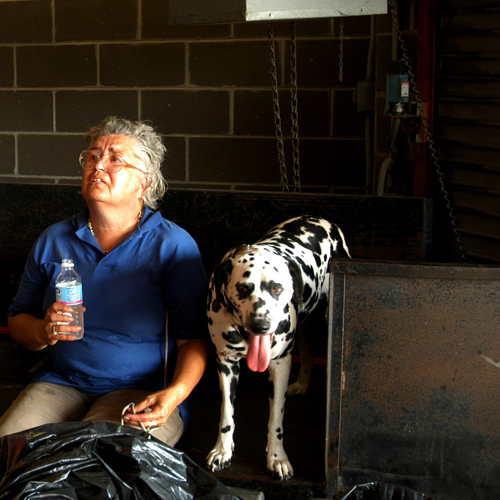
Learn more about the system that Wake County, North Carolina, implemented to ensure evacuation shelters were prepared to provide for household pets—increasing the willingness to evacuate and easing the stress of shelter residents.
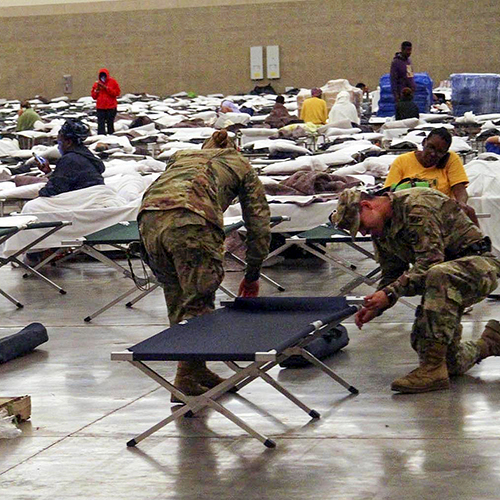
Misconceptions about crime risk can keep people from accessing shelters during disasters—clearly communicating about safety is key.
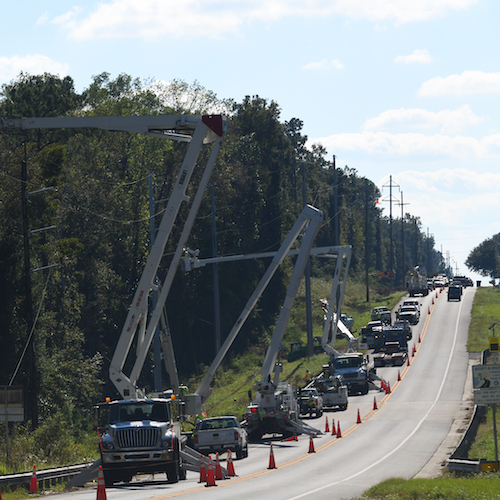
When extreme events tax the carefully coordinated resources in shelters, community sectors often step in to fill the gaps. Identifying how they can help out before a disaster can make these resources extend even further.

The inability to access adequate menstrual hygiene supplies in emergency shelters can make a stressful situation even more difficult for women and girls. Luckily, simple steps can be taken to address this important and sensitive public health issue.
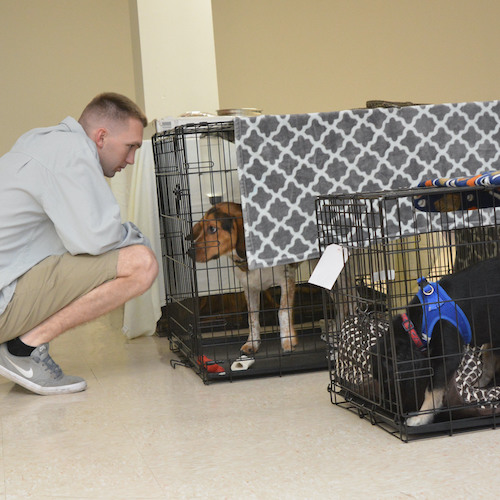
After people imperiled themselves for their pets in Hurricane Katrina, including animals in emergency plans became law. Learn more about resources that can ensure people feel comfortable sheltering with their animals.
Leveraging Community Groups for Coordination of Mass Care

Libraries play a central role in many communities; but when it comes to participating in disaster response, managerial outlooks might make all the difference.
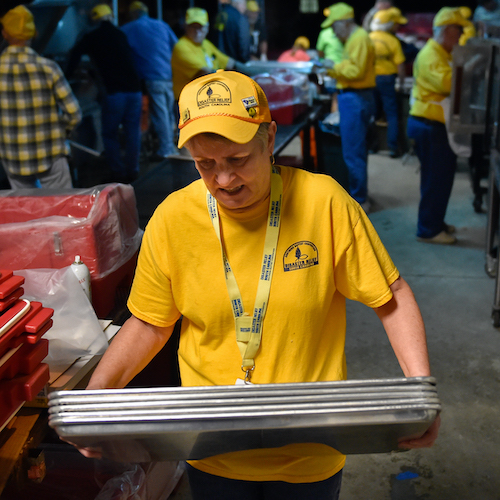
Public health planners that invest in building partnerships with community organizations, can see big payoffs in times of disaster. But they need to start the work before there’s a crisis.
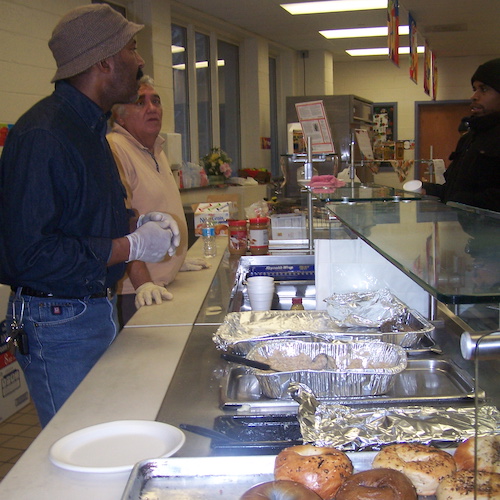
Although it takes time and resources, collaborating with community groups can drastically improve the capacity and effectiveness of public health agencies. Learn how to make such partnerships a success.
Mass Care Delivery and Capability Assessments

Prepping shelters during a pandemic is not business as usual. Find out how to plan ahead for a safer facility.
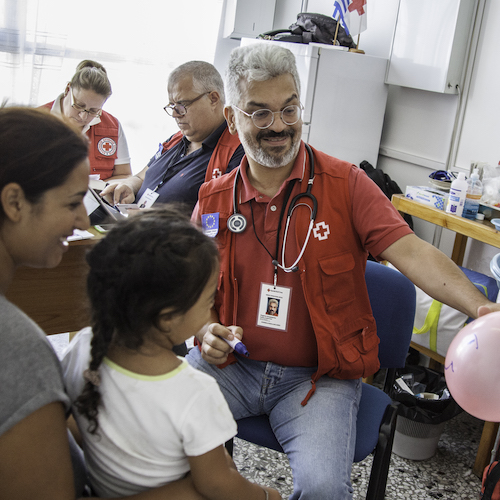
Shelter residents often arrive with complex medical and mental health needs, but with careful planning, providers can assure access to necessary services.
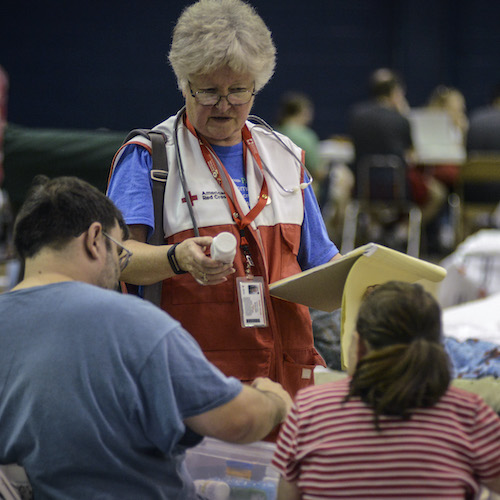
Public health surveillance in disaster shelters is a critical to identifying immediate needs within shelters and health trends in general. See how it works.

Shelter work can be stressful enough without worries about contracting COVID-19. Learn what can be done to support worker mental health in a pandemic.
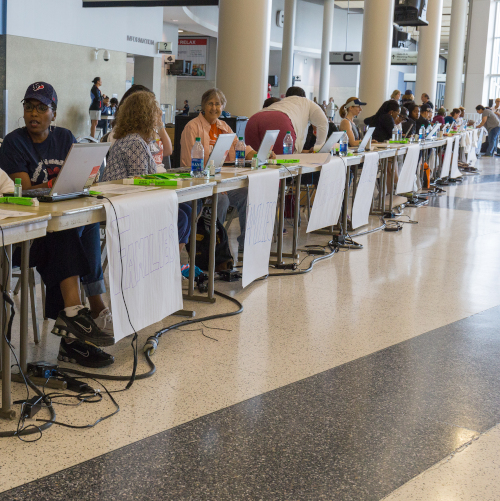
Mass evacuation centers receive an influx of residents, all dealing with some level of trauma. Lessons previously learned from designing mental health services in such large-scale shelters can assist in meeting the needs of evacuees.

Disasters are extremely stressful events and it's important that shelter residents can access help to cope. Ensuring that mental health resources are available and confidential can improve the outcomes of those staying in public shelters.

It’s important to make sure children’s mental health isn’t overlooked in disasters. Learn how implementing a system involving triage, screening, and referral can improve their outcomes.
Mass Sheltering for At-Risk Populations
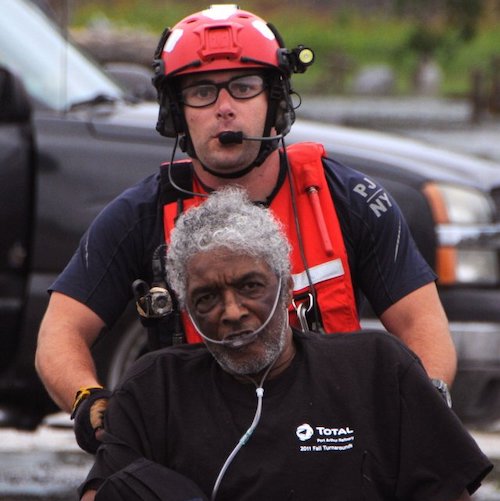
What Came After Hurricane Harvey for People With Disabilities? Restoring, Recovering, and Rebuilding
After a disaster, people with disabilities face different challenges in recovery. Laura Stough looks at the myriad of resources and services that need to be rebuilt with an eye to future resilience.
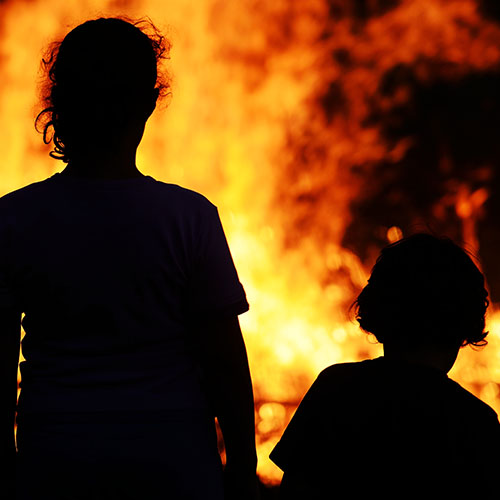
For families whose children have special healthcare needs, preparing for disasters, evacuating, and finding shelter can be overwhelming—and missteps can be life-threatening. Luckily, steps can be taken to keep families safe and reduce stress.

While people with disabilities often face obstacles in accessing emergency shelters, global policies are trending towards their inclusion. Read more about how we can equalize access.
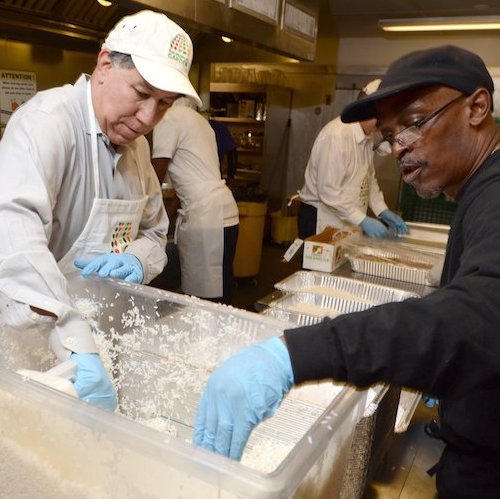
The needs and experiences of those who are homeless during disasters can be very different from other populations, yet often emergency planning doesn't account for their specific needs. A targeted toolkit makes it easier to address that gap.

Religious considerations can play a role in whether or not people of faith decide to make use of public shelters. Read more about how we can ensure culturally competent shelters are available for Muslim Americans and other religious minorities.

Small steps and a change of perspective about infant feeding in evacuation shelters could have big impacts on the well-being of mothers and children alike.

Teaching mass care workers to recognize the signs of dementia, depression, and delirium in older adults can ensure safety and reduce the burden on shelter resources.
Special Collection Citation: Breeden, J., Adams, R. M., Austin, J., Peek, L. & Appiah, S., eds. (2021). Research Counts, Volume 4, Special Collection on Mass Sheltering and Disasters. Boulder, CO: Natural Hazards Center, University of Colorado Boulder. https://hazards.colorado.edu/news/research-counts/special-collection/mass-sheltering

